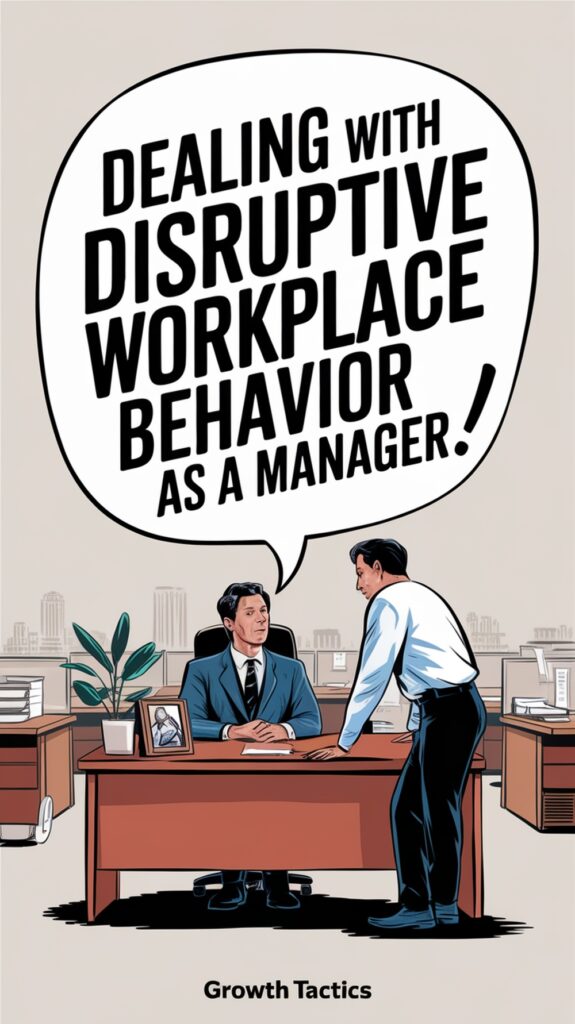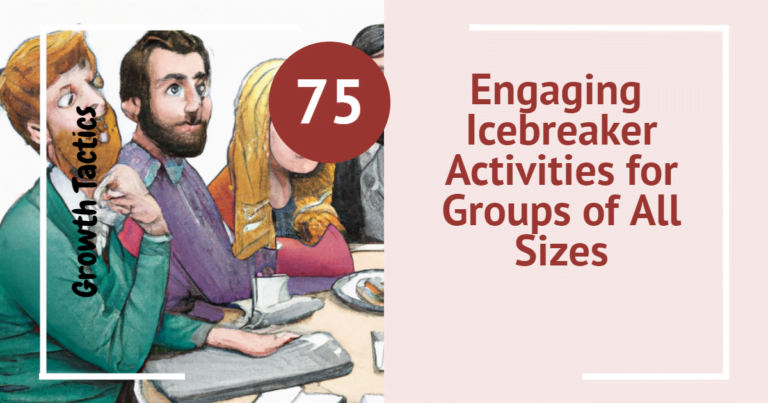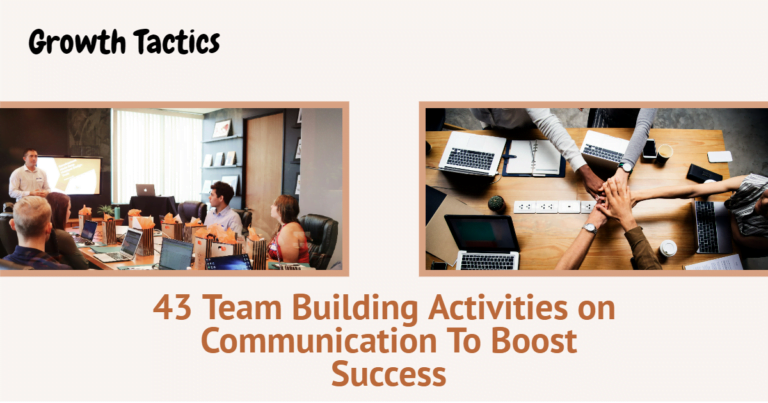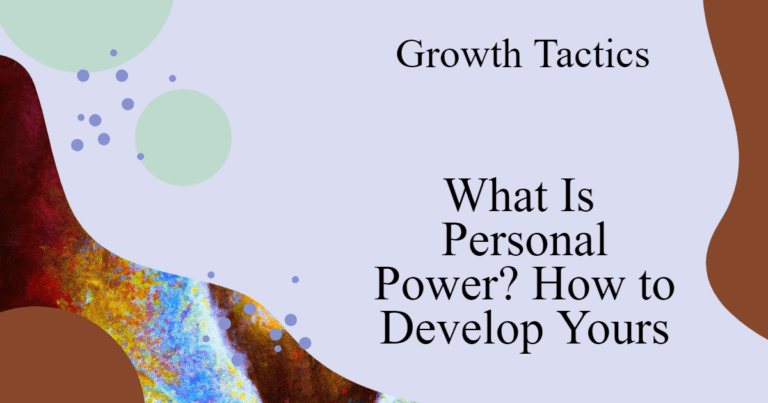Management requires you to navigate various challenges, like confronting disruptive workplace behavior. Such conduct can undermine team morale, decrease productivity, and even harm your organization’s reputation.
As a manager, you are responsible for identifying and addressing these behaviors promptly and effectively. This guide will equip you with actionable insights to manage disruptions while supporting your team’s success.
Jump To Section
Unmasking the Root Causes of Disruption

Psychological Factors at Play
Underlying psychological factors often fuel disruptive behavior, ranging from stress and anxiety to unresolved conflicts and low self-esteem. For instance, an employee undergoing high levels of stress may become easily agitated, leading to confrontational interactions with colleagues.
A study conducted by Workplace Peace Institute found that 60% of respondents reported workplace stress as a trigger for conflict. Moreover, individuals with poor emotional regulation skills might react impulsively, further intensifying disruptions. By identifying these internal struggles, you can tailor your management approach to address the specific needs behind the behavior rather than just the symptoms.
Employees dealing with feelings of exclusion or inadequacy can also express their frustrations through disruptive actions such as gossiping or passive-aggressive behaviors. Understanding emotional triggers and offering supportive resources like counseling or stress management workshops could mitigate these tendencies. Recognizing the importance of psychological well-being equips you to approach disruption with empathy and strategic intervention.
Environmental Influences on Behavior
Workplace culture and physical environment significantly impact employee behavior. High noise levels, cramped spaces, or lack of privacy often heighten tension, making disruptions more likely.
Additionally, leadership styles and team dynamics shape daily interactions; micromanagement or inconsistent policies may contribute to frustration, while inclusive leadership generally fosters cooperation. Evaluating how your office layout, communication channels, and managerial practices affect morale helps pinpoint environmental contributors to disruption.
Workplace changes such as rapid restructuring or unclear role definitions can breed uncertainty, leading to resistance or passive resistance behaviors. When employees feel unsupported or undervalued in their environment, negative behavior can act out as a cry for stability or recognition. Recognizing environmental triggers allows you to adjust conditions strategically, promoting a healthier and more respectful workspace.
Environmental factors often intertwine with psychological elements to magnify workplace disruption. The layout of an open office, for example, may exacerbate stress in someone already struggling with social anxiety, leading to withdrawal or outbursts.
On the flip side, well-designed spaces that encourage collaboration and transparent communication can reduce misunderstandings and conflicts. Recognizing these subtleties enables you to foster an environment that minimizes behavioral issues and maximizes employee engagement.
Common Types of Disruptive Behaviors
Managers often encounter a variety of disruptive behaviors in the workplace that can hinder productivity, affect team dynamics, and create an uncomfortable environment.
- Absenteeism: Frequent unexplained absences or habitual tardiness can lead to resentment among present team members and undermine overall morale.
- Rudeness and Disrespectful Communication: Interrupting colleagues, using a condescending tone, or engaging in gossip can create a toxic atmosphere that stifles collaboration and innovation.
- Workplace Bullying: This includes verbal intimidation, exclusion from team activities, persistent negative feedback targeting specific individuals, eroding confidence, and increasing turnover.
- Resistance to Change: Employees may display negativity or sabotage initiatives aimed at improving processes or adapting to new technologies, which can stall organizational growth.
- Poor Time Management: Individuals who consistently miss deadlines or procrastinate disrupt workflow and place additional pressure on colleagues.
- Conflicts Between Team Members: Unresolved conflicts can escalate, leading to a decline in teamwork and cohesion if not managed promptly and effectively.
- Unprofessional Behavior: Inappropriate attire or conduct can undermine a professional atmosphere, prompting managers to take action to uphold workplace standards.
Crafting a Proactive Management Strategy
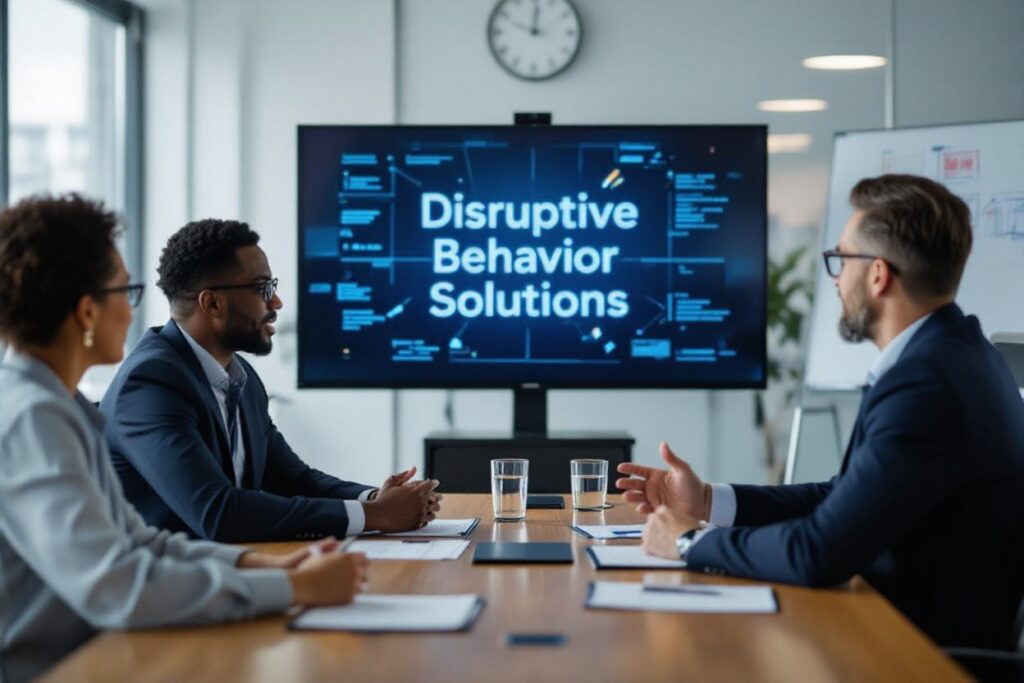
Addressing disruptive behavior effectively begins with laying a foundation that nips it in the bud as quickly as possible. Your strategy should focus on prevention through a combination of clear standards and open dialogue tailored specifically to your team’s dynamics.
Proactively outline what your team members can expect regarding behavioral norms, consequences, and support mechanisms. This upfront clarity reduces ambiguity, which often contributes to workplace friction and misbehavior.
Regular monitoring and adaptation help you spot changes in team dynamics before they escalate into issues. Using tools like weekly feedback sessions or pulse surveys can reveal potential problems early. Clear expectations and quick responses show your team that behavior standards are not random, but part of a dynamic framework focused on shared success.
Setting Clear Expectations and Boundaries
Clearly defining acceptable behavior sets a standard everyone understands. You can create a behavior charter with examples of positive and negative actions, incorporating these guidelines into onboarding and team reviews. For example, stating that interruptions or rude comments will lead to formal warnings can help prevent such behavior.
It’s also crucial to enforce these rules consistently; mixed responses can cause confusion and resentment, weakening your authority. Proportional consequences for offenses promote fairness. When your team sees you applying rules consistently, they respect you more, leading to fewer disruptions.
Developing a Communication Framework
Create a communication framework that promotes open and respectful dialogue, allowing team members to voice concerns early. Use regular one-on-ones and anonymous feedback channels to identify issues before they grow. Integrate communication norms into team agreements, such as active listening and constructive feedback, to enhance collaboration and emotional intelligence.
A well-structured framework should mix formal and informal communication methods, like scheduled meetings and casual check-ins, to build rapport and address critical issues effectively. Additionally, utilize digital platforms that fit your team’s workflow, like dedicated Slack channels for recognition and updates, to encourage ongoing discussions.
Providing training on emotional regulation and conflict resolution will equip your team with the skills to handle challenging interactions, turning potential conflicts into opportunities for growth.
Navigating the Intervention Landscape

Addressing disruptive behavior at work requires a mix of firmness and empathy. Each situation is unique and needs a specific approach. For example, if an employee is acting out due to personal stress or burnout, offering support can be just as helpful as addressing the behavior directly.
However, if someone repeatedly ignores workplace rules, formal action may be needed to maintain team harmony and company standards. Knowing your organization’s culture and your role in resolving issues is crucial.
Ensure your methods align with company policies while being aware of individual personalities. You can consult HR for help in complicated situations, but often, your quick and consistent response as a manager will decide whether the issue escalates or gets resolved quickly.
Constructive Feedback Techniques
Giving feedback that encourages improvement instead of defensiveness is a valuable skill. Focus on specific behaviors rather than personal traits to avoid sounding accusatory. For instance, instead of saying, “You’re disruptive,” say, “During yesterday’s meeting, your interruptions made it hard to stay on track.”
This approach helps the employee see the effect of their actions without feeling attacked. Following up with collaborative goal-setting boosts their sense of ownership and motivation, allowing you to create action plans with clear milestones and timelines. Recognizing even small progress through positive reinforcement fosters trust and keeps momentum going.
To enhance your feedback, use the “SBI” model (Situation-Behavior-Impact), which helps you outline the situation, describe the behavior, and explain its impact. This clarity prevents misunderstandings and makes it easier for the employee to accept and act on your feedback.
Evaluating Outcomes and Adjusting Tactics
After implementing behavior management strategies, the next step involves a thorough evaluation of their effectiveness. You should closely monitor changes not only in individual behavior but also in overall team dynamics. Tracking the frequency and severity of disruptions over time can reveal whether interventions have truly ameliorated the issues or if unresolved tensions linger beneath the surface. For instance, if the number of documented incidents drops by 50% within a quarter, that signals a positive shift; however, if incidents remain steady or escalate, a reassessment of your approach becomes necessary. Your ability to interpret these patterns allows you to pivot designs and methods swiftly, ensuring continuous improvement.
Adjusting tactics means leveraging both quantitative data and qualitative insights gathered from regular feedback sessions. Engaging your team in anonymous surveys or one-on-one check-ins offers valuable perspectives on how well they feel supported and whether the workplace atmosphere has improved. Avoid relying solely on formal disciplinary records; instead, incorporate signals such as increased collaboration, reduced absenteeism, and higher engagement scores as indicators that your approach is working. This comprehensive evaluation process enables you to fine-tune your management style and promote a more cohesive, productive environment.
Metrics for Success in Behavior Management
A key metric is the reduction in disruptive behavior incidents, which leads to less time spent on conflicts and more resources for team goals. Low turnover rates indicate that employees feel safer and valued. You can also track productivity by monitoring project completion rates and deadlines after implementing changes.
Employee engagement surveys offer insights into morale and trust, with positive shifts in communication, respect, and teamwork often linked to effective behavior management. Observing these metrics over time shows long-term trends, supporting your case for ongoing investment in training or conflict-resolution tools.
Final Words
Dealing with disruptive workplace behavior as a manager requires a balanced approach of firmness and empathy. You must address issues promptly to maintain a positive work environment, while also understanding the perspectives of the individuals involved. By establishing clear expectations and consistently enforcing policies, you foster a culture of respect and professionalism that benefits the entire team.
Taking proactive steps to support your employees and encourage collaboration ensures that disruptive behavior does not undermine productivity or morale. Ultimately, your leadership in managing challenges directly shapes the success and harmony of your workplace.
